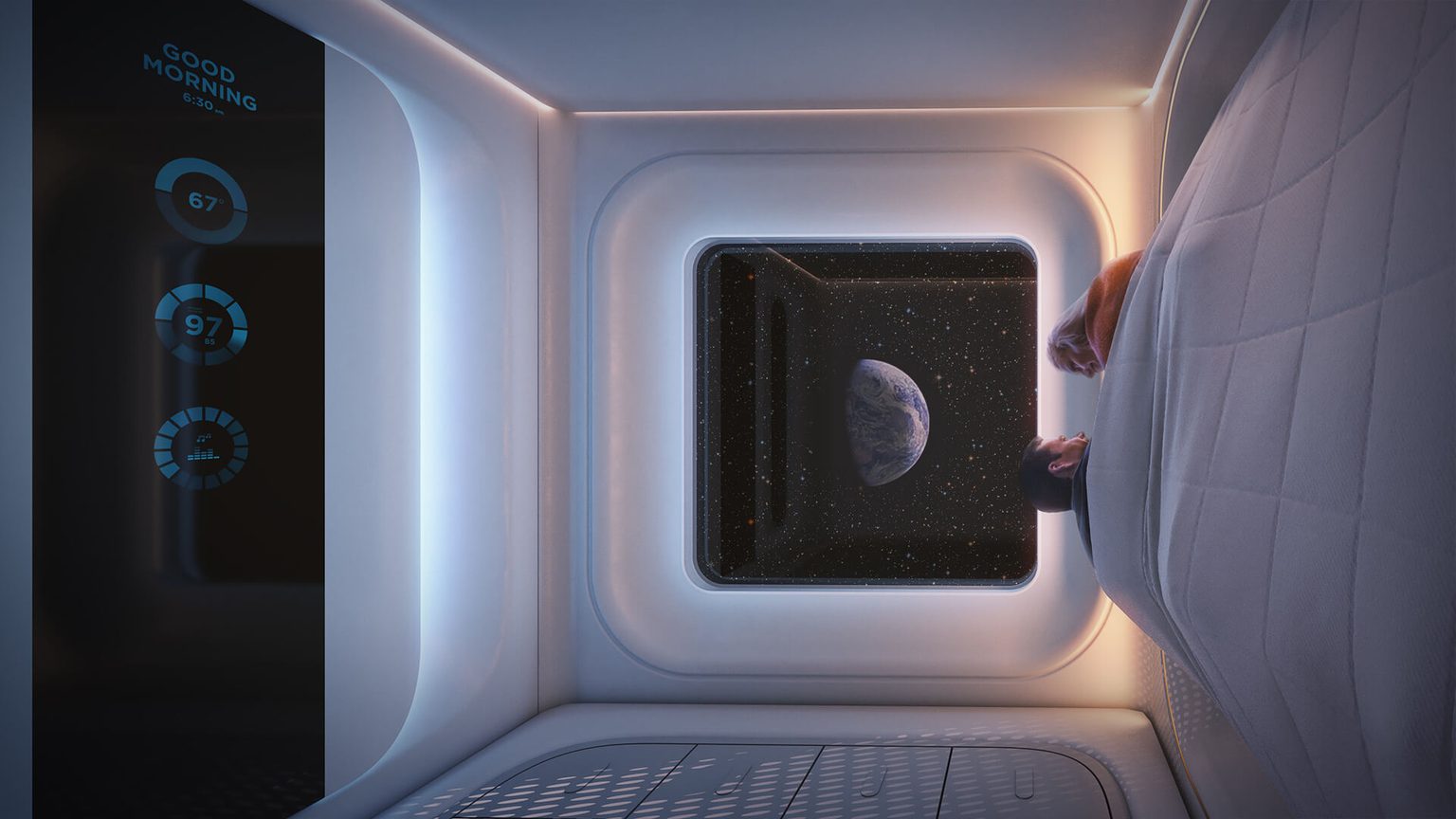
Space
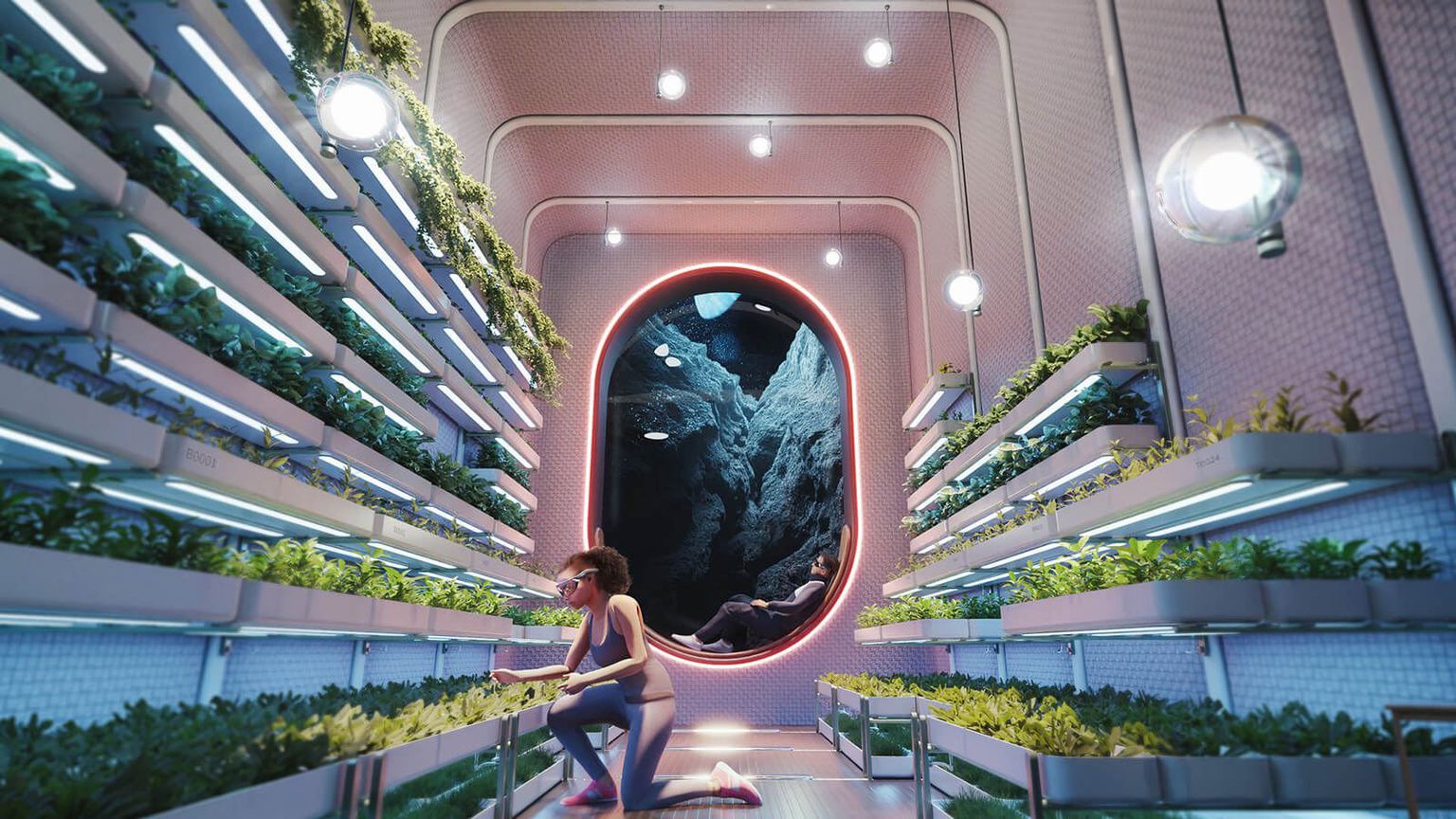
Teague Featured Concept | Space Habitat | Lunar Living
Category
Expertise
Leveraging years of experience working with private space companies and decades collaborating with Fortune 100 aerospace OEMs and NASA, Teague shares a vision for future life on the Moon, applying human-centered design principles to improve mission performance.
Challenge
On December 7th, 1972, astronauts Commander Eugene Ceman and Lunar Module Pilot Harrison Schmitt stepped onto the surface of the Moon for the final lunar excursion of Apollo 17; it was the last time any human being would set foot on the Moon for more than 50 years.
For the past five decades, low Earth orbit (LEO) missions and unmanned scientific exploration have taken the place of moonwalks, but that’s all about to change. The acceleration of the commercial space industry, led by the emergence of public-private sector partnerships and increased investment from privately owned companies like Axiom Space, Blue Origin, and SpaceX, are creating new opportunities for business that will expand the space economy in LEO and beyond.
Backed by commercial partners, NASA's latest programs, Artemis and Moon to Mars, represent the dawn of a new Commercial Space Age that will lead human civilization into a new era of scientific discovery. The goal? Future missions to Mars and a long-term, sustainable lunar presence—which begs the question: who on Earth would want to live in outer space?
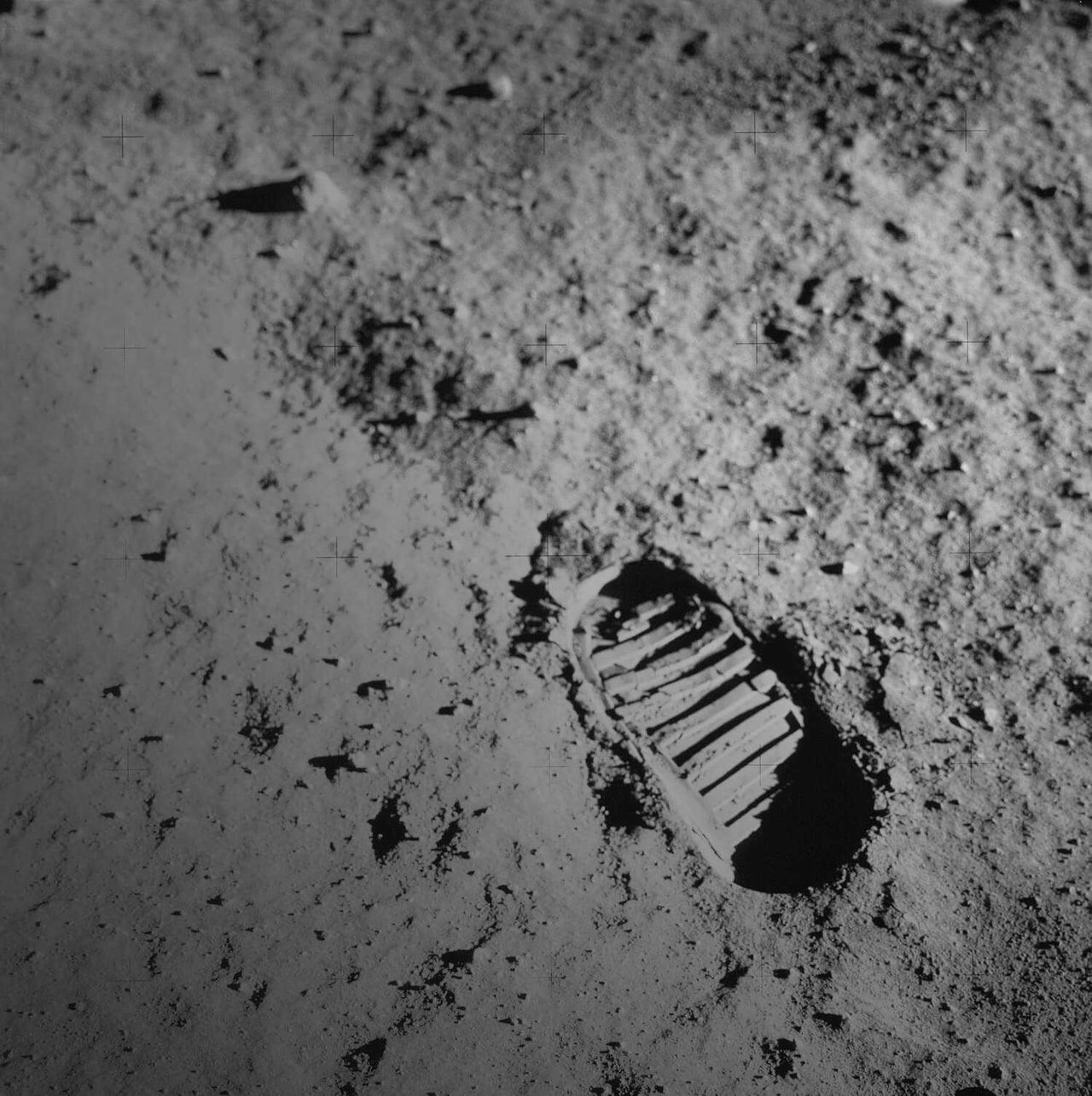
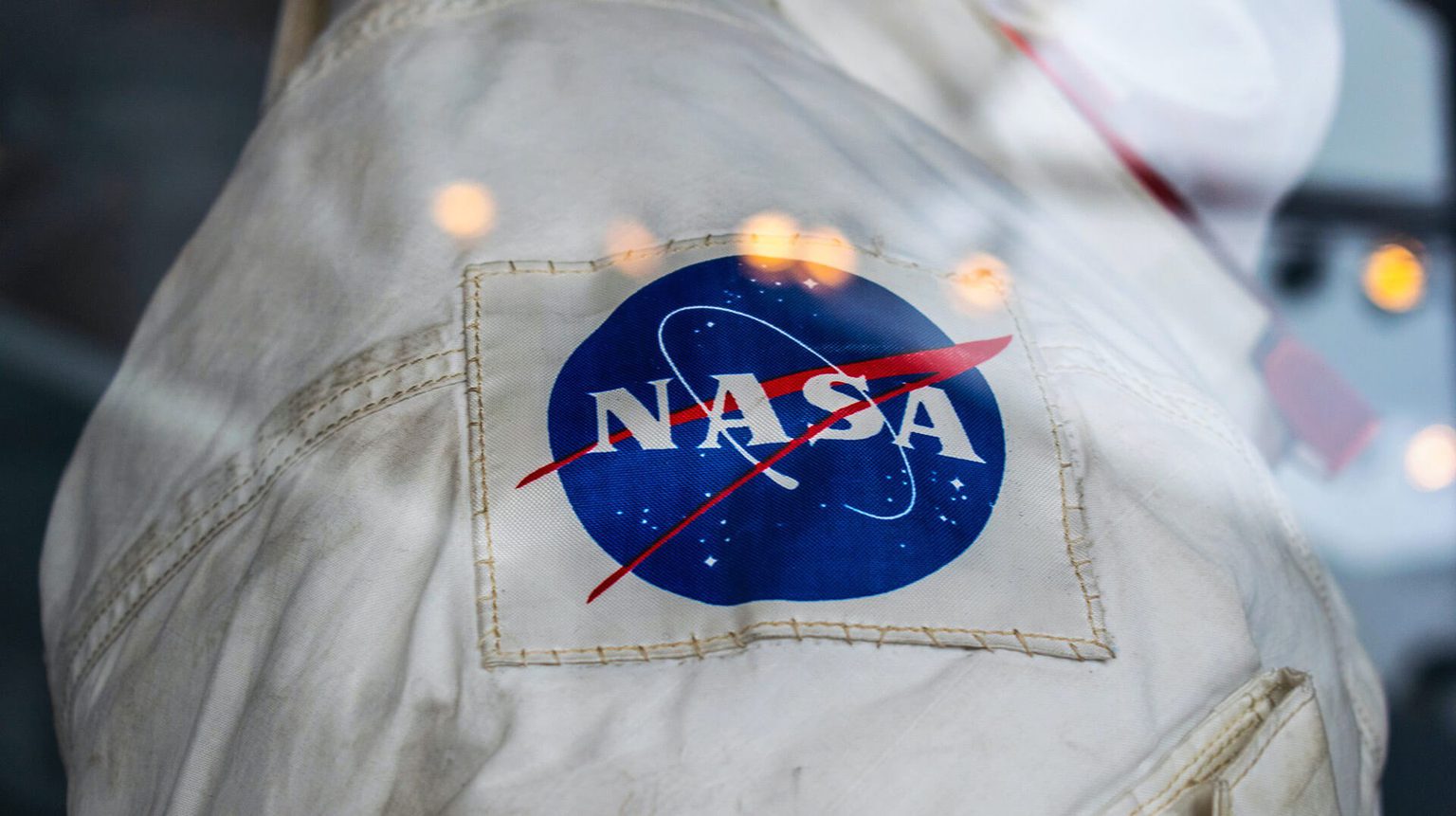
APPROACH
Human space exploration has always been driven by goals to achieve a specific mission on a specific timeline. Near term, that won’t change much. What will change is the type of people selected to go on missions and what those missions entail.
The next generation of space explorers will be neither the highly-trained astronauts we’re familiar with today nor casual space tourists; this group represents the future workforce beyond LEO.
The next generation of space explorers will be neither the highly-trained astronauts we’re familiar with today nor casual space tourists; this group represents the future workforce beyond LEO. For the foreseeable future, this space workforce won’t be pushing new frontiers, but they will usher in a new wave of scientific discoveries and lay the groundwork for an off-world economy. They’ll also challenge our current understanding of what it means to be an astronaut.
Astronauts today are a bit like professional athletes; their bodies and minds have been conditioned specifically for going to and living in outer space—the most extreme environment imaginable. They train and rehearse together, operate in dramatic situations, and make extraordinary decisions as a team in service of a single mission.
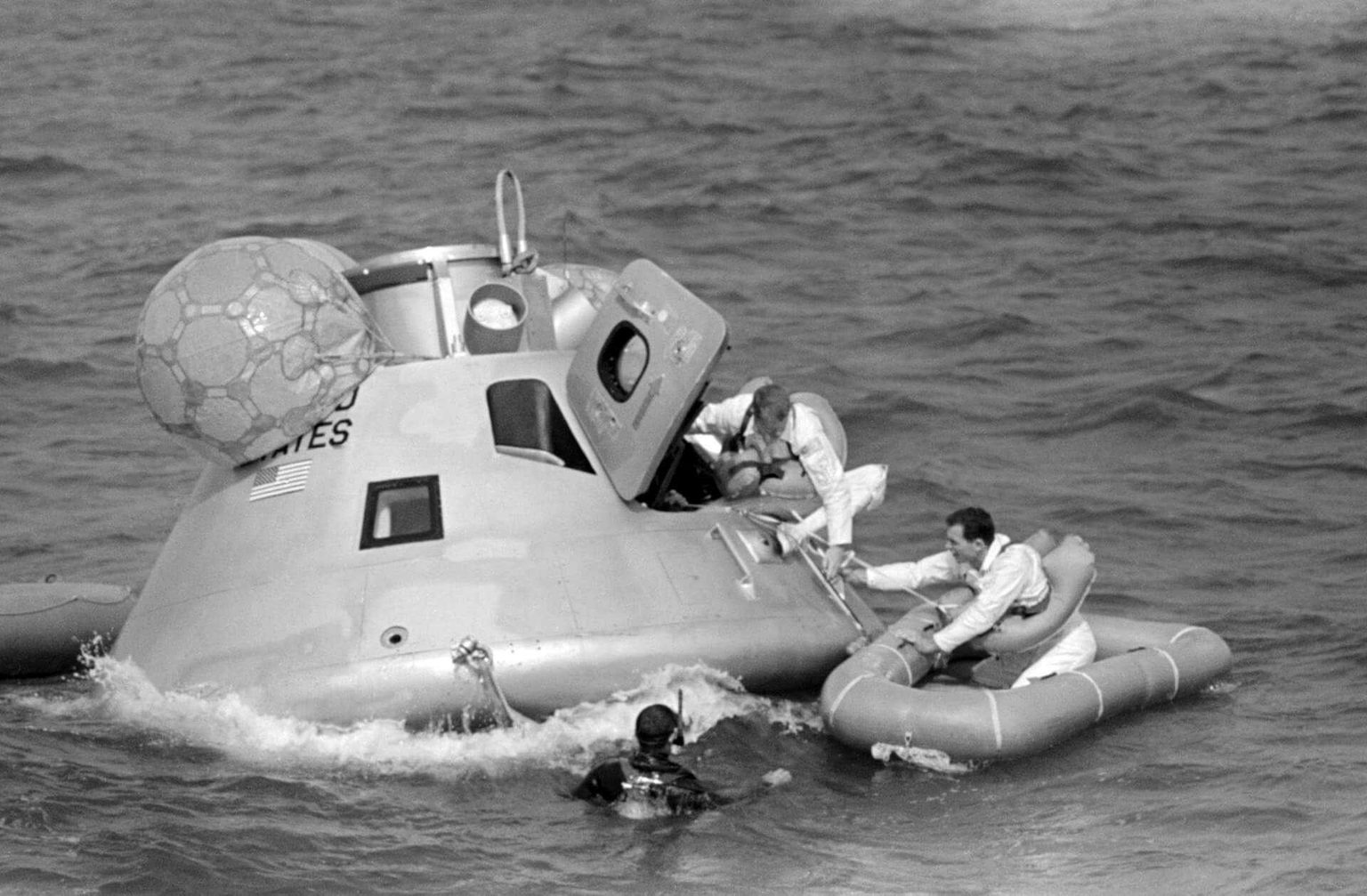
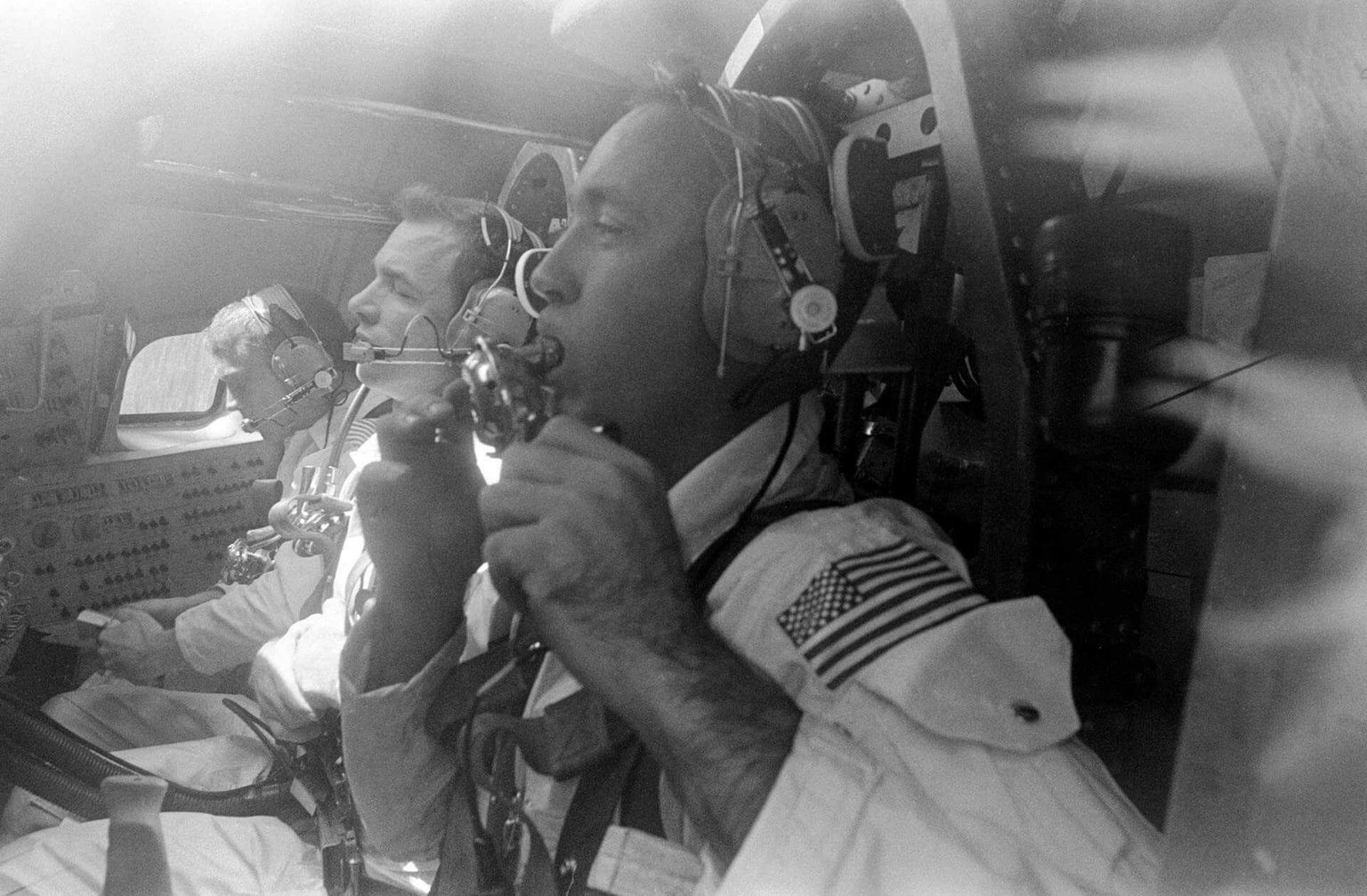

Future space explorers will require some training to live and work in space, but nothing close to the advanced training and educational programs astronauts currently confront. Missions will be varied, and the people assigned to those missions will most often be strangers to one another other with different goals and motivations.
Teague has collaborated with publicly funded agencies like NASA, as well as private space companies, and aerospace OEMs for years. Our specialized expertise in designing for space, including a deep understanding of current users and future use cases, makes us uniquely qualified to conceptualize a preferred future for living and working in space.
From manufacturing to mining, medicine, and beyond, the work being done in space will be as varied as the workforce is diverse. With improving mission outcomes as our top priority, we centered our work on user goals rather than preferences. Three key design drivers with mission performance indicators emerged.
01/
02/
03/
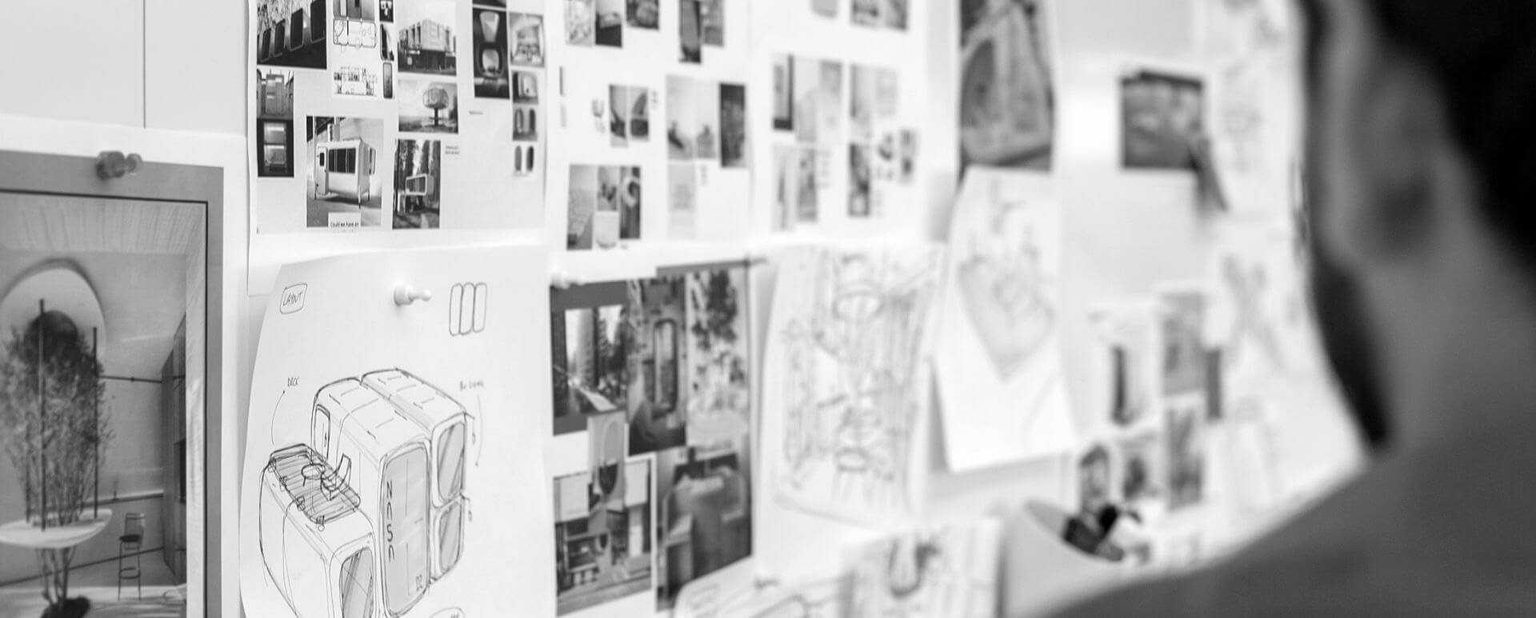
Solution
It takes just three days for a spacecraft to get to the Moon.
And then what?
Space is a hostile environment. Radiation, lunar dust, and moonquakes, among a long list of other things, are actively attempting to snuff out human life before a single step is ever taken on the Moon. Luckily, work is already underway on the structural design of lunar habitats that will function as safe havens for the future space workforce. Our vision for life on the Moon hinges on modular inflatable structures for easy adaptability to evolving and often unknown conditions on the Moon’s surface. The ideal location for basecamp: lunar lava caves.
The Moon has almost no atmosphere; temperatures during the day can reach a blistering (read immediately fatal) 270 degrees Fahrenheit, while nighttime temps can drop as low as -280 degrees. Lava caves maintain a cozy temperature of 63 degrees. Beyond temperature, shielding the base from radiation is also a key consideration for location choice; caves provide the right amount of protection.
With a location pinned down for basecamp, the real work begins.

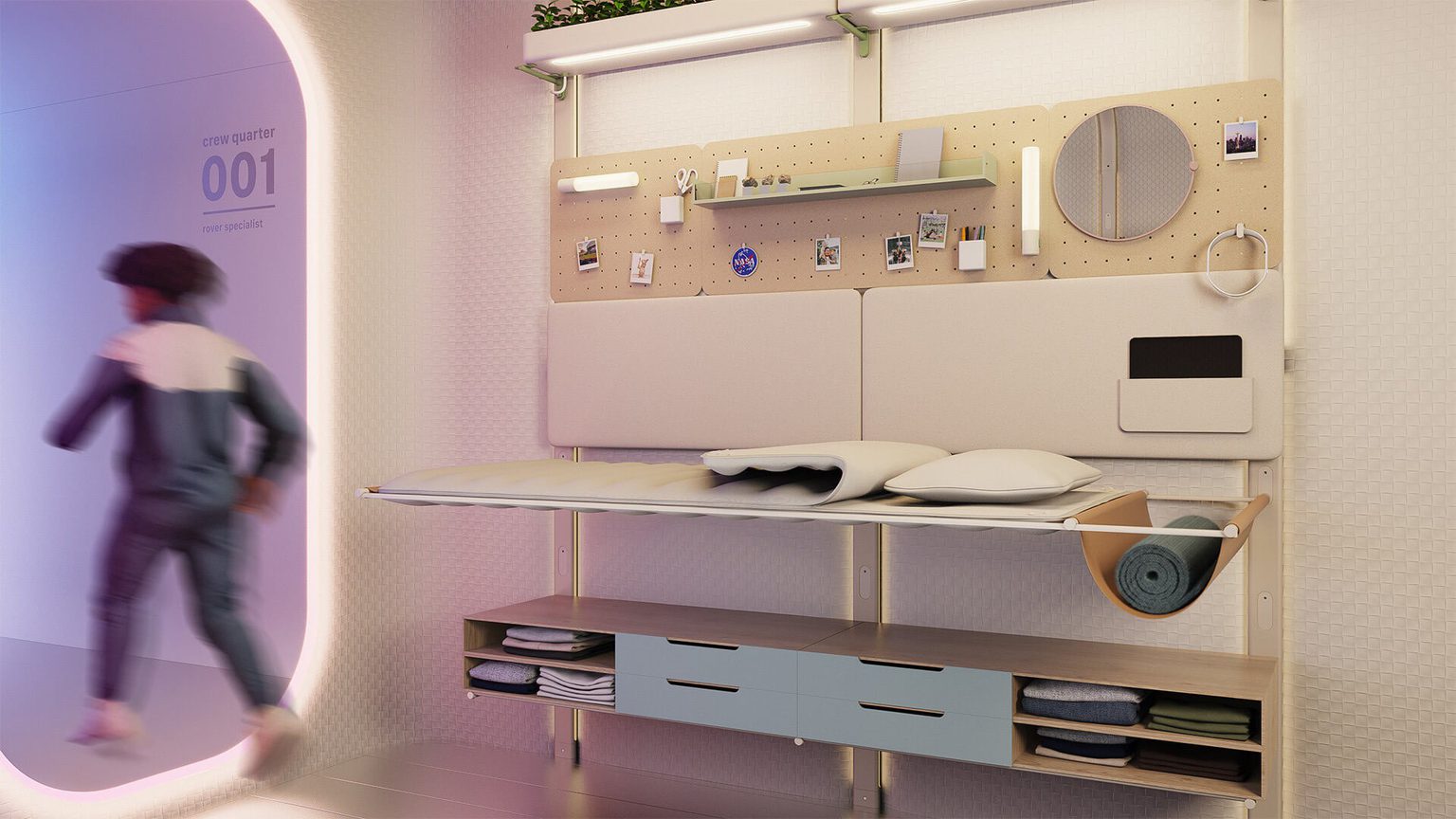
Combining decades of experience designing confined environments across commercial aviation, aerospace, and defense with cues from small living trends such as micro-apartments, multi-family living, and van life, our concept embraces a modular approach to habitat design.
The capacity of the built environment to support multiple functions without altering the existing architecture will be fundamental to mission success.
Based on our most recent collaboration with NASA on Mars Dune Alpha, for habitat interiors we propose a set of interactions that allow for the quick and easy conversion of space as workers go about their day. Panels can be moved to reveal workstations and task lighting and later be repositioned for other use cases, essentially tucking work away at the end of the day. Panels also make easy work of zoning, providing the necessary structure to define public and private space. Everything having a place and every place being multi-functional not only optimizes space but also clears visual clutter, which can alleviate stress and improve cognitive function.
The capacity of the built environment to support multiple functions without altering the existing architecture will be fundamental to mission success.
One of the greatest opportunities resulting from the commercialization of space is to design new experiences that don’t rely on legacy systems. In fact, designing for space demands it. It costs thousands of dollars to put a pound of payload into outer space, so every product has to earn its spot. On the Moon, digital interfaces won’t be confined to screens because they can’t be. Screens don’t last long enough, and they’re too heavy. Fortunately, the technology we’re working on now with companies like AWS, Intel, and Google will evolve and mature into a perfect fit for lunar life. Workers on the moon will engage with natural user interfaces (NUI) that understand natural language commands, behaviors, and gestures.
The combination of a NUI with a wearable device will improve task completion and increase efficiencies with real-time notifications, and quick access checklists, and step-by-step instructions at the ready. Interfaces, and all the information they contain, simply fade away when not in use. Significant gains are achieved by providing only the right information at the right time.
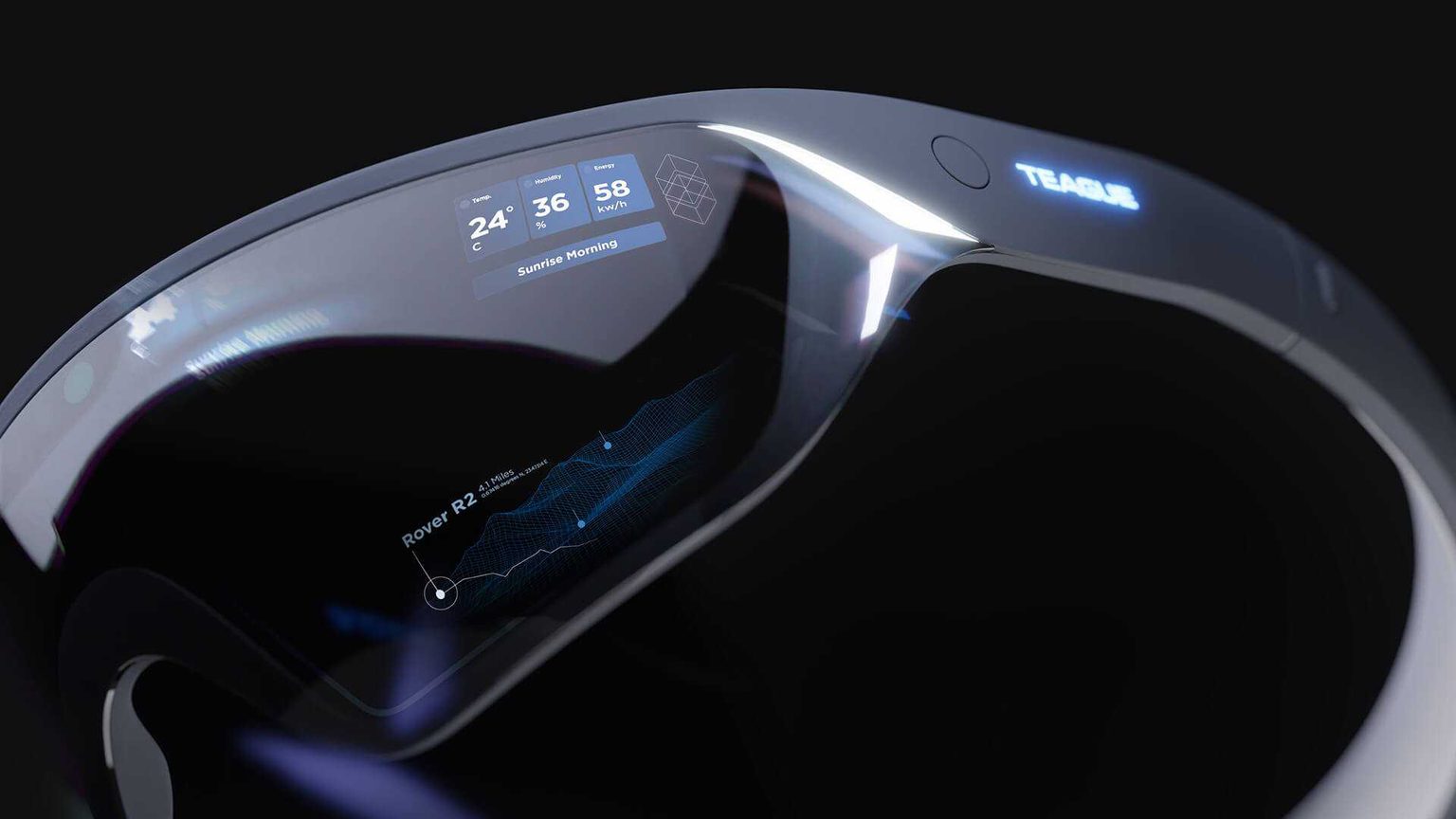
Another advantage of NUI, there are no screens cluttering up the physical environment. NUIs also eliminate the omnipresence of physical notes, charts, graphs, and gigantic three-ring procedure binders hanging around to distract the eye. Future habitats won’t be tiny houses, but they will be small. Separating work and home life has proven to lower stress and improve productivity.
That said, not all boundaries need to be physical. Outer space happens to be the perfect playground for the metaverse—perhaps the only place having a parallel to our physical world actually makes sense. But more on that later…

On Earth, when we think about creature comforts, we picture things like a comfortable bed or hot shower. What we’ve learned talking to astronauts over the years is that comfort is more of a state of mind than a collection of things or experiences; comfort in outer space comes from familiarity that is grounded in the human experience. In our research, that’s most often articulated as a connection to our natural world—more specifically, a sense of time and purpose, human connections, and the color green.
Maintaining strong bonds with family and friends is mission-critical; supporting emotional wellness leads to improvements in quality of life and productivity gains that increase mission effectiveness.
Time is a human construct, but it’s an important one. The human body runs on a circadian clock that naturally resets every day by the sun’s light/dark cycle. A lunar day, when sunlight is cast on the Moon’s surface, is about 14 Earth days; a lunar night is the same duration, which means 14 days of light, followed by 14 days of dark. And a severely disrupted circadian rhythm. Dynamic lighting scenes designed to replicate Earth’s light/dark cycle will help manage circadian rhythms to promote better performance.
A circadian approach to lighting design will also provide a sense of time that supports human connections back on Earth. This is especially important for the future space workforce; there will be 239,000 miles between people living on the Moon and everyone they love—loneliness is a known biopsychosocial stressor that can be detrimental to physical and mental health. Maintaining strong bonds with family and friends is mission-critical; supporting emotional wellness leads to improvements in quality of life and productivity gains that increase mission effectiveness.
Next Steps
While we can only imagine and begin to prepare for future life on the Moon, human-centered design and engineering will play a critical role in shaping our off-world future and will uniquely support this pioneering workforce to improve mission effectiveness and bolster the growing space economy.
Photography provided by NASA | nasa.gov
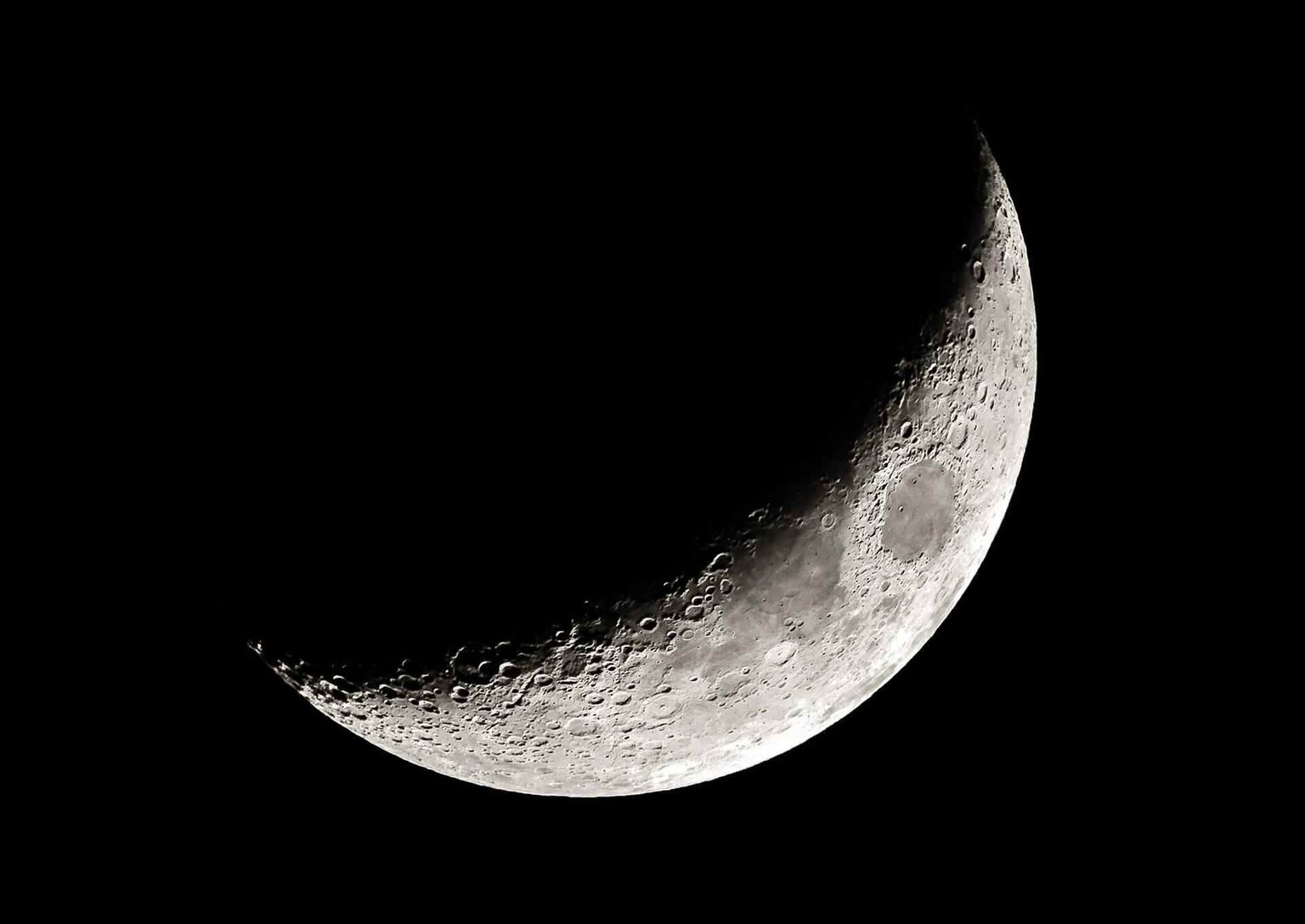
Whether you're looking to improve mission performance or gain a competitive brand advantage, we're looking for new partners who want to advance the space economy.